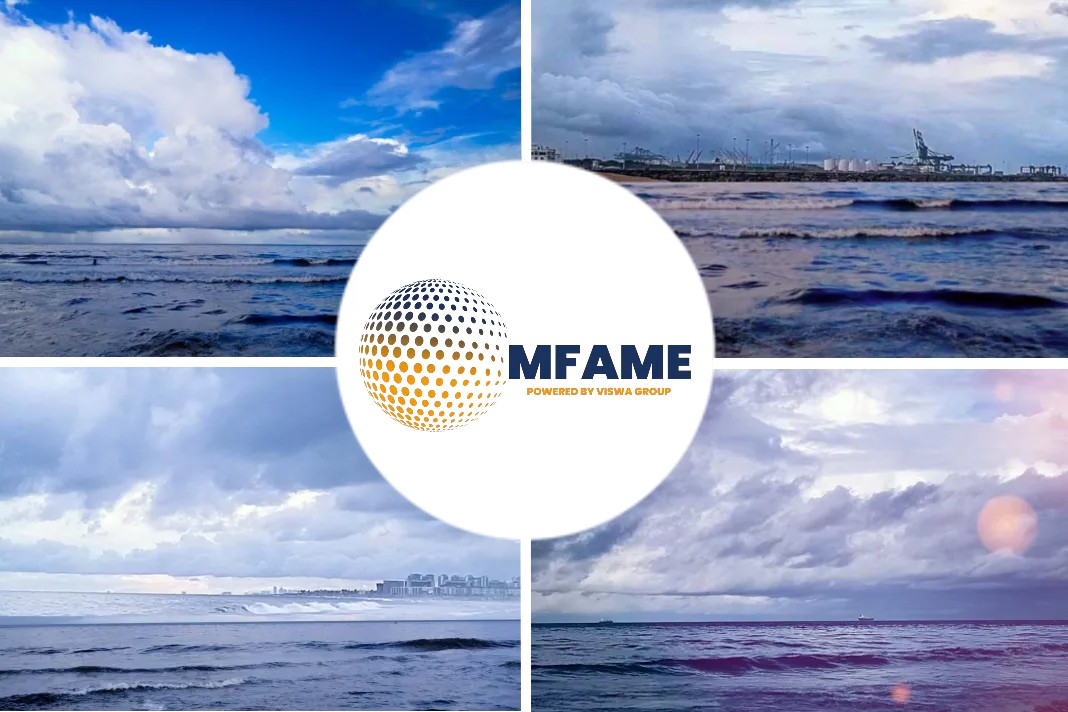
DHT Holdings has completed the installation of three exhaust gas cleaning systems in the second quarter of 2023 and now all 23 very large crude carriers (VLCCs) in the company’s fleet are scrubber-fitted, says an article published on Offshore energy.
Gas cleaning systems
Scrubbers, also known as exhaust gas cleaning systems, allow companies to continue running their ships on high-sulfur fuels while complying with the IMO 2020 regulation on the reduction of sulfur oxide (SOx) emissions from ships, with the primary goal of improving air quality and reducing the environmental impact of maritime transportation.
The company has invested in scrubbers as part of a strategy of reaping premiums from higher fuel price spreads.
Spot market
During the second quarter, DHT Holdings achieved an average combined time charter equivalent (TCE) earnings of $56,300 per day.
This noteworthy figure was composed of $36,200 per day for the company’s VLCCs on time-charter, and a robust $64,800 per day for VLCCs operating in the spot market. The specific result for VLCCs operating in the spot market, measured on a discharge-to-discharge basis, reached $61,800 per day.
Current underlying freight market
DHT Holdings’ Adjusted EBITDA for the period stood at $89.8 million, and its net profit was $57.1 million.
“During the quarter, the freight market experienced meaningful volatility. However, when compared to earlier comparable periods, the lows have been significantly higher with ships of eco-design and fitted with exhaust gas cleaning systems bottoming out in the high $30k to low $40k per day levels, well above our net income and cash break-even even levels,” DHT said, commenting on the market.
“This suggests to us that the current underlying freight market is between balanced and tight, and easily triggered for upward movements and stronger earnings for our company.”
Economic recovery
The oil market is witnessing a significant shift in dynamics as key agency-implied balances tighten due to upward revisions in general demand. Despite a more measured economic recovery in China than initially anticipated, the second-half outlook remains bullish.
According to DHT, the robust surge in Chinese demand has defied expectations, contributing to positive market sentiment.
A notable trend
One of the driving factors behind the tightening market is the recent announcement of supply cuts from major players like Saudi Arabia and Russia. These supply cuts, coupled with Saudi Arabia’s decision to raise Official Selling Prices, have led to inventory draws. It appears that their strategy to bolster oil prices is gaining traction, showcasing the influence of these supply adjustments.
As explained, a notable trend has emerged in certain markets, especially in China, where there is an increase in the sourcing of shortfalls from the Atlantic region, including Russia. This dynamic has led to longer transportation distances as China seeks to meet its growing demand.
Rewarding market
“The current inventory draws, that should be followed by a period of stock rebuild, and forecasts of increased demand during the second half of the year should in combination bode for a rewarding market for our business,” DHT said.
Technological advancements
Amidst a landscape of shifting maritime dynamics and evolving industry demands, a cautious sentiment prevails in the realm of large tanker contracting. This apprehension, anchored in several critical factors, resonates with the complex interplay of economics, environmental considerations, and technological advancements in the maritime sphere.
“Despite recent ordering of up to possibly 10 VLCCs set for delivery predominantly in 2026, we understand general interest in contracting large new tankers to be very limited. This reflects high asking prices from shipbuilders without any significant design improvements to justify such prices, increased cost of debt capital, and uncertainties related to future fuels, hereunder their price and availability, to credibly meet decarbonization ambitions and targets,” DHT Holdings said.
A competitive cost base
A distinctive and interesting supply dynamic is unfolding, as brokers estimate that approximately 15 to 18% of the global VLCC fleet is engaged in what is termed as the shadow markets.
This situation has led to the emergence of two separate markets, with minimal cross-employment between them. As a result, the overall fleet’s productivity is being hampered.
“In this constructive market environment, we are convinced of the merits of our strategy. We continue to focus on running our business as efficiently as we can with strong revenue generation for our assets, a competitive cost base and low financial leverage. With this backdrop, we believe our policy of returning 100% of net income as quarterly cash dividends will reward our shareholders,” the company said.
Did you subscribe to our daily newsletter?
It’s Free! Click here to Subscribe!
Source: Offshore Energy















